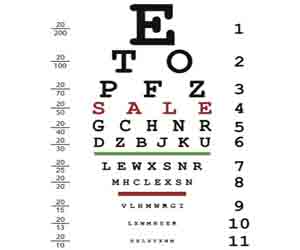 There are a number of different eye problems that occur because of diabetes. The most serious eye disease is called Diabetic Retinopathy.
There are a number of different eye problems that occur because of diabetes. The most serious eye disease is called Diabetic Retinopathy.
Over time, high blood glucose and high blood pressure from diabetes can damage the retina’s tiny blood vessels. Initially, the blood vessels swell and weaken.
Next, clogging, in one or both eyes, can occur causing not enough blood to reach the eye. At this stage, you may not notice any loss in vision or other symptoms.
As the damage progresses, the eye will develop new, but weaker, blood vessels. The weaker blood vessels are prone to leaking blood into the vitreous fluid of the eye, blocking light from reaching the retina. You may see floating spots or possibly darkness if this occurs.
The condition may clear itself, however surgery can be required. Depending upon your condition, laser surgery may suffice. This surgery essentially seals the broken or leaking blood vessels. If a lot of blood has leaked into the eye, a procedure called vitrectomy is performed which removes the occluded vitreous fluid and replaces it with clear fluid.
The condition can worsen, causing scar tissue to form, resulting in the retina pulling away or detaching from the back of the eye. Symptoms that this may have occurred include seeing floating spots or flashing lights. An eye doctor must be consulted immediately to reattach the retina and minimize the damage.
Other Retinopathy Symptoms
- Blurry or double vision
- Dark or floating spots
- Pain or pressure in the eye(s)
- Rings or flashing light.
- Trouble seeing out of the corners of your eyes.
Cataracts
 Another common diabetes related eye disease is cataracts. True, cataracts can occur in anyone, not just people with diabetes. However, if you have diabetes your chances of having a problem are much worse and you tend to develop them earlier than people who do not have diabetes.
Another common diabetes related eye disease is cataracts. True, cataracts can occur in anyone, not just people with diabetes. However, if you have diabetes your chances of having a problem are much worse and you tend to develop them earlier than people who do not have diabetes.
Cataracts is a cloud over the lens of your eye. The lens allows you to focus light, thus the cataract blocks or occludes the light, causing images to appear cloudy. Surgery is required to remove the cataract and the lens, with a new permanent plastic lens being inserted.
Besides surgery, ask your doctor about the use of N-Acetyl-Carnosine eye drops. Many patients have shown improvements in their vision with his less invasive medicine.
Glaucoma
Glaucoma is pressure within the eye that causes damage to the optical nerve. Initially, the pressure will affect the vision you see out of the corners of your eyes. Glaucoma treatment usually consists of eye drops that relieve the pressure within the eye. Surgery is also an option.
Sources:
National Institute of Health, Publication No. 07-4279, Prevent Diabetes Problems: Keep your eyes healthy, January 2007 (Accessed December 2008).
By Erich Schultz – Last Reviewed January 2012.
